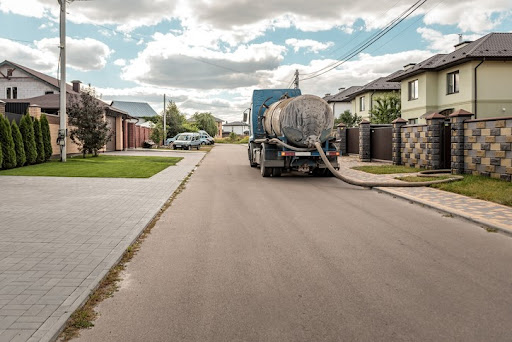A well-designed and properly installed septic tank can last for decades—or it can fail in just a few years. It all depends on whether you prioritize septic tank inspections and maintenance.
Routine septic pumping is one of the most important parts of maintaining your septic system. The Environmental Protection Agency (EPA) recommends doing this every three to five years based on the size of your household, how much wastewater you generate, the volume of solids in your wastewater, and the septic tank size. But what does septic pumping entail? Take a closer look at how this process works and what to expect.
Step 1: Open the Septic Tank Access Lid
The first step is to locate and access the septic tank. The access lid is usually located near the home’s main sewer line and may be buried under six to 12 inches of soil. If needed, your service provider may use a metal detector to locate the lid.
Once found, crew members carefully remove the access lid. They also inspect it for corrosion, cracks, or other damage that could warrant a replacement.
Step 2: Pump Out the Tank
The next step is to pump the tank using a high-powered hose connected to a vacuum truck. This sucks out solid waste, liquid, and scum and pumps it into the truck’s holding tank. Removing as much accumulated waste as possible is important to prevent blockages and backups in the septic system.
Step 3: Clean the Tank
Your service provider now cleans the tank using high-pressure water to remove any remaining debris or build-up. Septic tank cleaning is crucial to maintain system efficiency and prevent future problems.
Step 4: Conduct a Visual Inspection
Next, the crew visually inspects the tank’s interior and exterior, checking for any cracks, leaks, or other damage that could affect functionality. Your contractor may recommend repairs or replacements if they find any problems during this inspection.
Step 5: Close and Rebury the Lid
When the inspection is complete, the crew replaces the access lid and reburies it. You may request a riser installation to lift the lid above ground level for easier access during future upkeep. Your service provider should ensure the area is clean and tidy before driving away.
Step 6: Dispose of Scum and Sludge
The final step in the septic tank pumping process is to discard the scum and sludge in a proper and environmentally safe manner. Waste is usually taken to a treatment facility for processing and disposal according to local regulations.
Hiring a professional septic tank pumping company ensures the process outlined above is performed correctly and efficiently. Turn to Trinity Liquid Waste for a job well done. Our family-owned business has over 25 years of experience serving residential and commercial customers in the San Francisco Bay Area. We specialize in septic pumping, septic inspections, septic repairs, and other plumbing-related services. Whether you need a routine visit or an emergency response, we have you covered! To schedule septic services with us, please call 510-874-6489 or contact us online.

